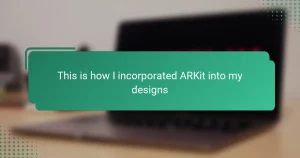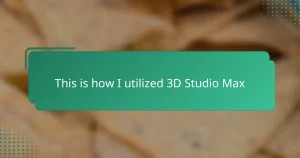Key takeaways
- Science fiction props serve as powerful storytelling tools that evoke emotions and symbolize advanced technology within their narratives.
- Unreal Engine enables creators to visualize their ideas in 3D with real-time rendering, focusing on lighting and camera angles to enhance emotional impact.
- Effective scene planning involves blocking out layouts and prioritizing thoughtful lighting to create a compelling atmosphere that guides viewer perception.
- Using techniques like physically based rendering and layered textures adds depth to props, making them feel more realistic and connected to their narrative histories.
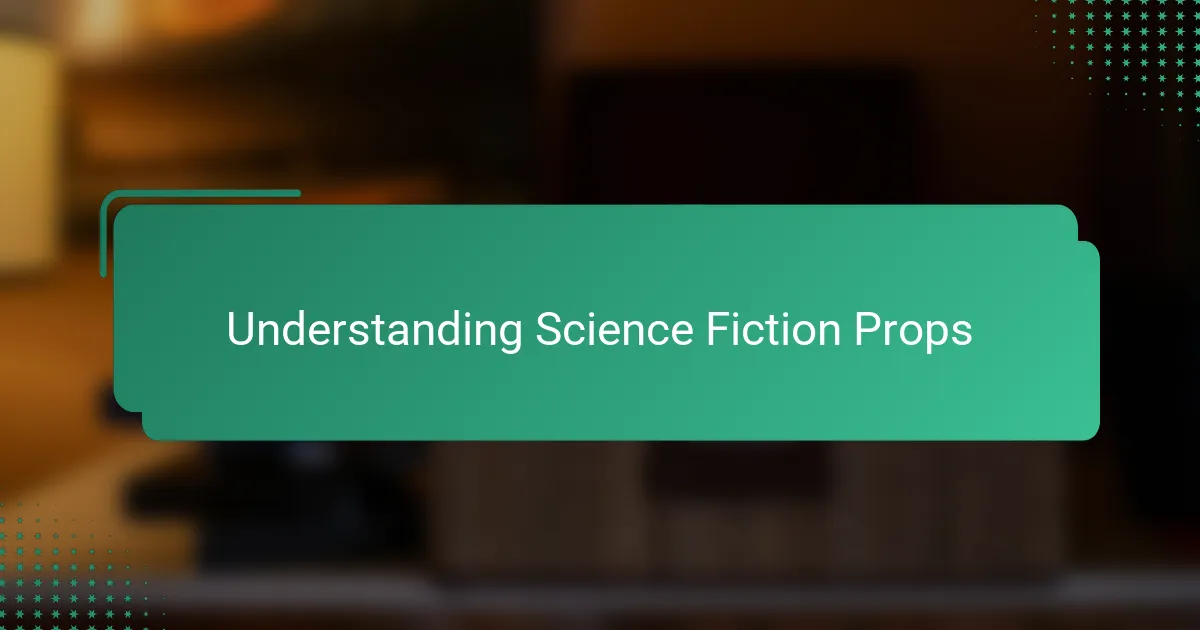
Understanding science fiction props
Science fiction props are more than just objects; they are the tangible pieces of imagination that bring futuristic worlds to life. I’ve often found myself marveling at how a simple gadget or costume element can capture the essence of an entire story. Have you ever wondered how a prop can evoke emotions or suggest advanced technology without a single word spoken?
In my experience, understanding these props means recognizing their dual role: they’re both functional elements within a narrative and symbols laden with meaning. When I dive into their design, I ask myself—what story does this object tell? How does it connect to the characters and the universe they inhabit?
That emotional connection is what makes science fiction props so fascinating to me. They’re bridges between our reality and speculative futures, inviting us to imagine possibilities beyond the known. Isn’t it incredible how something forged from creativity and craftsmanship can transport us across time and space with just a glance?
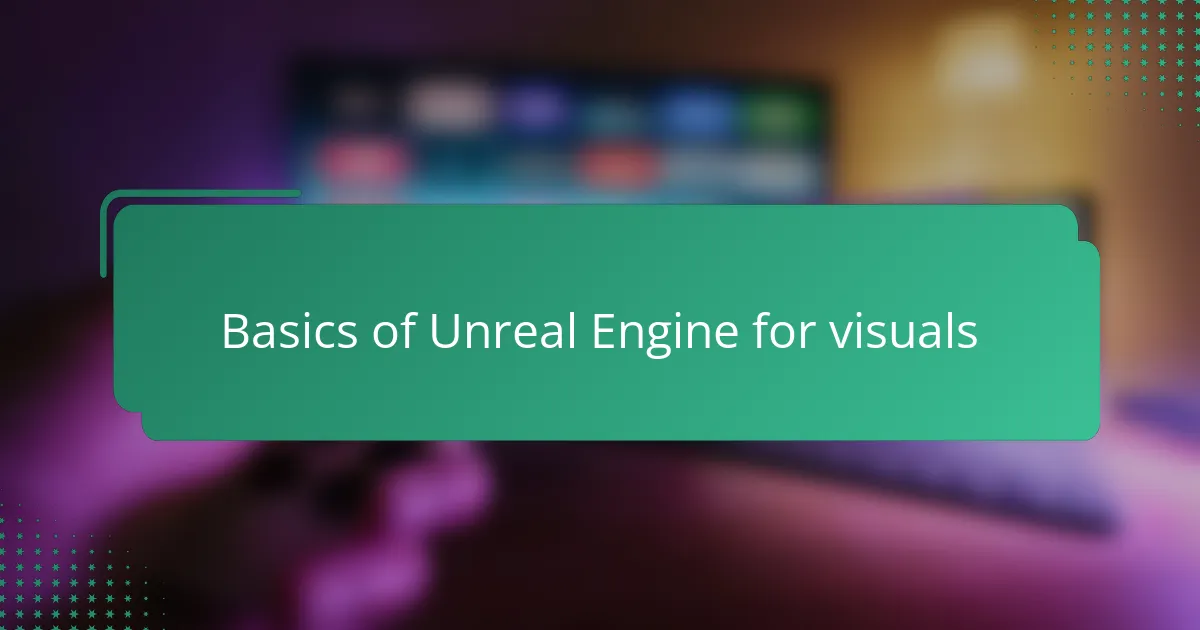
Basics of Unreal Engine for visuals
Unreal Engine is a tool I turned to when I wanted to bring my sci-fi visions into vivid 3D worlds. At its core, it’s all about creating visuals through real-time rendering, which means I can see changes immediately, making the creative process feel almost like painting with light. Have you ever experienced the thrill of watching an imagined scene come alive right before your eyes?
What struck me most about the engine is its node-based material editor—it’s like having a digital workshop where I blend textures, colors, and effects to craft the perfect look for each prop or environment. I remember spending hours tweaking surfaces until they reflected the exact futuristic vibe I had in mind. Isn’t it satisfying when a digital object starts to feel tangible?
Lighting and camera controls are another game-changer. Adjusting light angles or switching camera lenses lets me shape the mood and highlight the details that matter most in a scene. From my experience, these basics aren’t just technical steps—they’re storytelling tools that help transform a static model into a compelling visual narrative. How often do we overlook the power of light in evoking emotion?
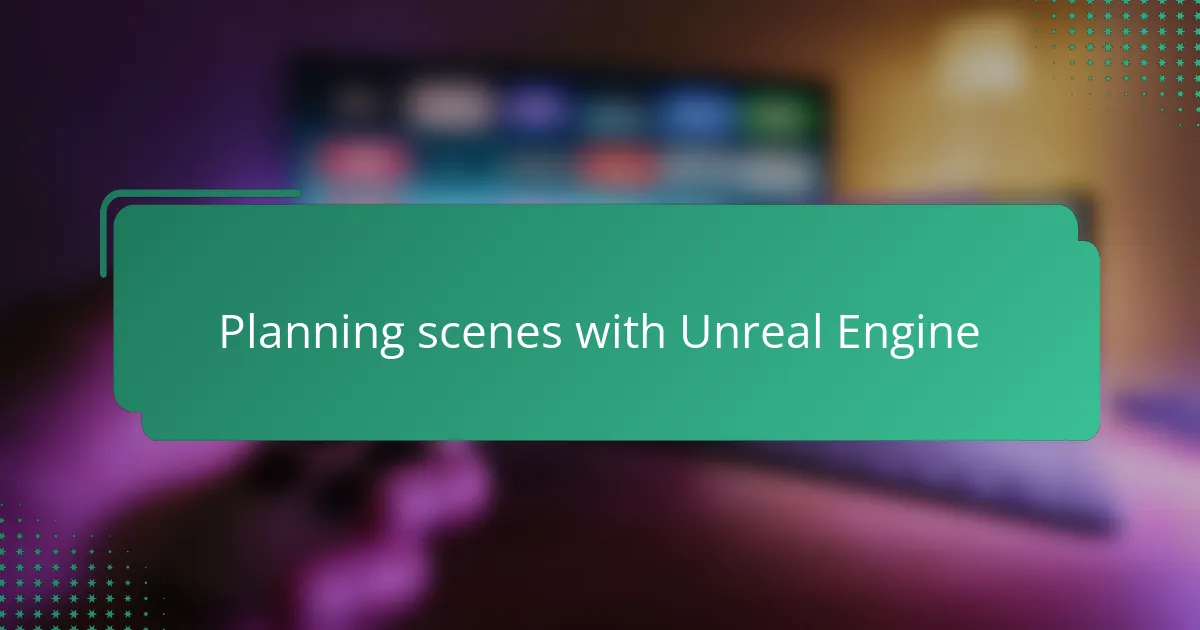
Planning scenes with Unreal Engine
Planning scenes with Unreal Engine begins with envisioning the story I want to tell. I usually sketch out key moments and consider how props interact within the space, because without a clear vision, even the most detailed models can feel flat. Have you ever tried placing a prop in a scene only to realize it clashes with the overall mood? That’s when I learned how crucial early planning is.
One technique I find invaluable is blocking out the scene with simple shapes before adding details. This rough layout helps me test composition, camera angles, and movement without getting lost in minutiae. It reminds me of setting the stage for actors—everything must have a purpose and rhythm to guide the viewer’s eye naturally.
Lighting decisions also factor heavily into my planning phase. Before diving into textures or effects, I experiment with different light positions and intensities to set the tone. From my experience, thoughtful lighting can elevate an ordinary object into something extraordinary, setting the emotional pulse of the entire scene. Have you noticed how a well-placed shadow can shift your perception instantly?
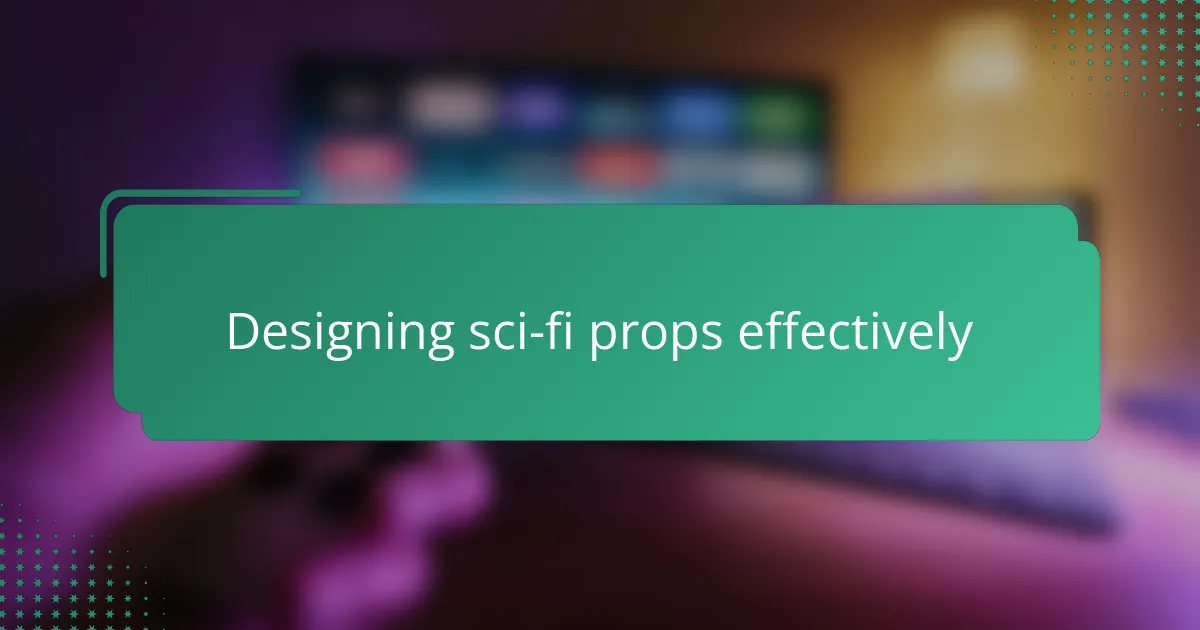
Designing sci-fi props effectively
Designing sci-fi props effectively starts with imagining their role in the story’s universe. I often ask myself, what function does this piece serve? Is it a tool, a weapon, or a symbol of a society’s values? This questioning guides every curve and detail, ensuring the prop feels authentic and purposeful.
Material choices are another crucial step. When I’m working in Unreal Engine, I experiment with textures and finishes that hint at advanced technology—sleek metals, glowing panels, or worn surfaces that tell a history. Have you noticed how the right surface can suggest everything from cutting-edge innovation to age-old tradition?
Finally, simplicity sometimes speaks louder than complexity. I’ve learned that cluttering a prop with too many elements can confuse viewers rather than intrigue them. What detail can I emphasize that will instantly communicate the prop’s meaning? Striking that balance is what makes a design memorable and believable.
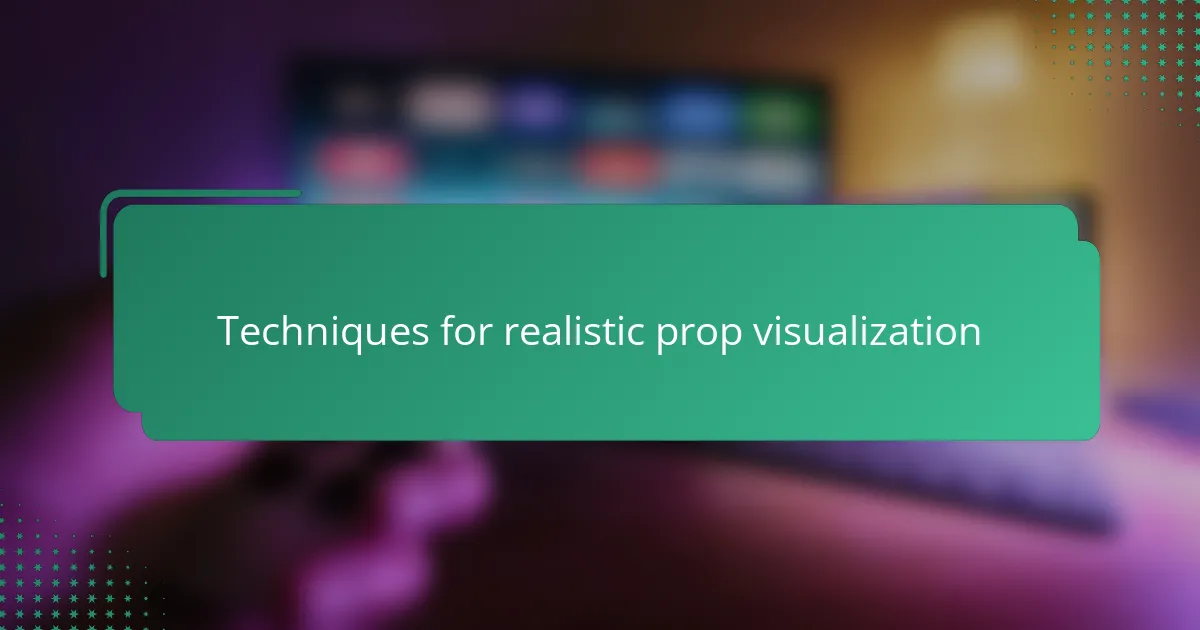
Techniques for realistic prop visualization
When it comes to visualizing realistic science fiction props in Unreal Engine, one technique I rely on is leveraging physically based rendering (PBR) materials. By simulating how light interacts with different surfaces—whether a gleaming metal or a dusty plastic—I can make a prop look convincingly tangible. Have you ever noticed how a tiny specular highlight or subtle roughness change suddenly makes a model pop off the screen? That’s the magic of paying attention to these nuanced details.
Another approach I’ve found essential is layering textures to create depth and history on a prop. Adding dirt, scratches, or faded paint isn’t just about realism; it’s storytelling through wear and tear. From my experience, these imperfections invite viewers to imagine the prop’s past adventures, making it feel more alive than a pristine, sterile object ever could. Isn’t it fascinating how a small scuff can evoke an entire saga?
Finally, I always experiment with dynamic lighting setups within Unreal Engine to bring out the prop’s character. Sometimes, a well-placed rim light or colored glow breathes life into a static model. In my work, adjusting shadows and highlights isn’t just technical—it’s an intuitive way to guide the audience’s focus and mood. How often do we underestimate how much lighting shapes our perception of reality?
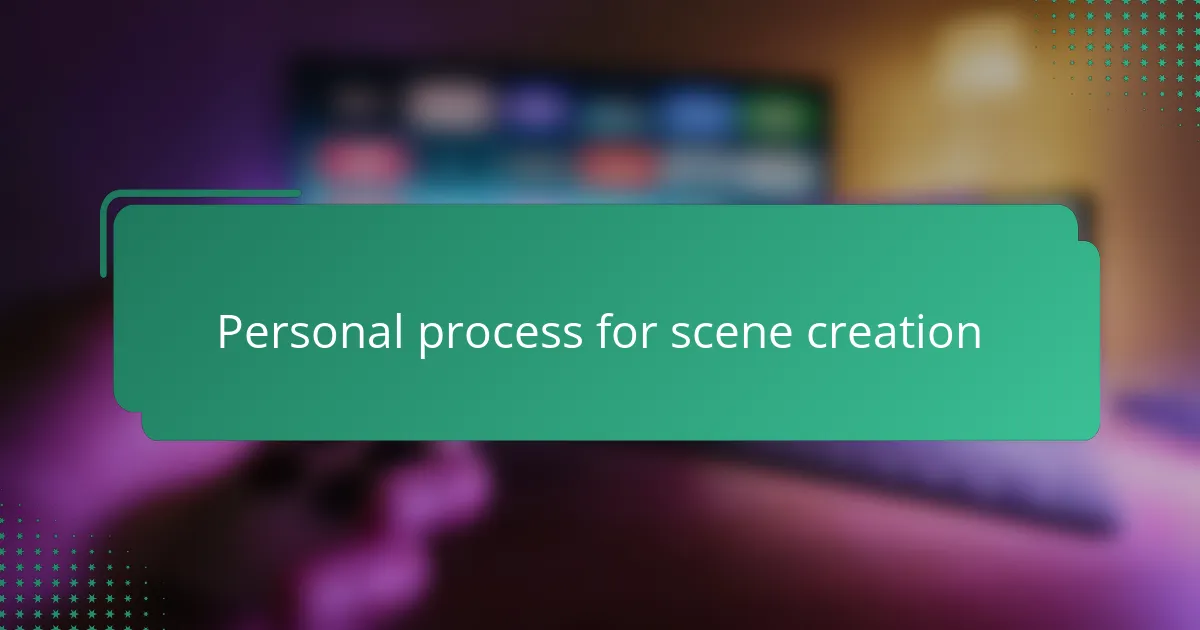
Personal process for scene creation
My personal process for scene creation in Unreal Engine always kicks off with a moment of quiet reflection. I try to immerse myself in the atmosphere I want to build, asking, “What feeling should this scene evoke?” That emotional starting point helps me shape every decision—from layout to lighting—so the scene doesn’t just look good but also feels alive.
Once I have a mood in mind, I dive into blocking out the scene with rough shapes and simple props. It’s amazing how this low-detail stage reveals a lot about composition and flow—kind of like sketching before painting. I recall one project where rearranging a single element early on transformed the whole dynamic, making the scene feel far more balanced and intentional.
Finally, I treat lighting as my secret storytelling partner. Playing with light angles and intensities isn’t just technical fiddling; it’s an intuitive search for the perfect emotional tone. I’ve spent hours just adjusting shadows, watching how a small change can make a scene seem mysterious, hopeful, or even ominous. Don’t you find that light can say so much without uttering a word?
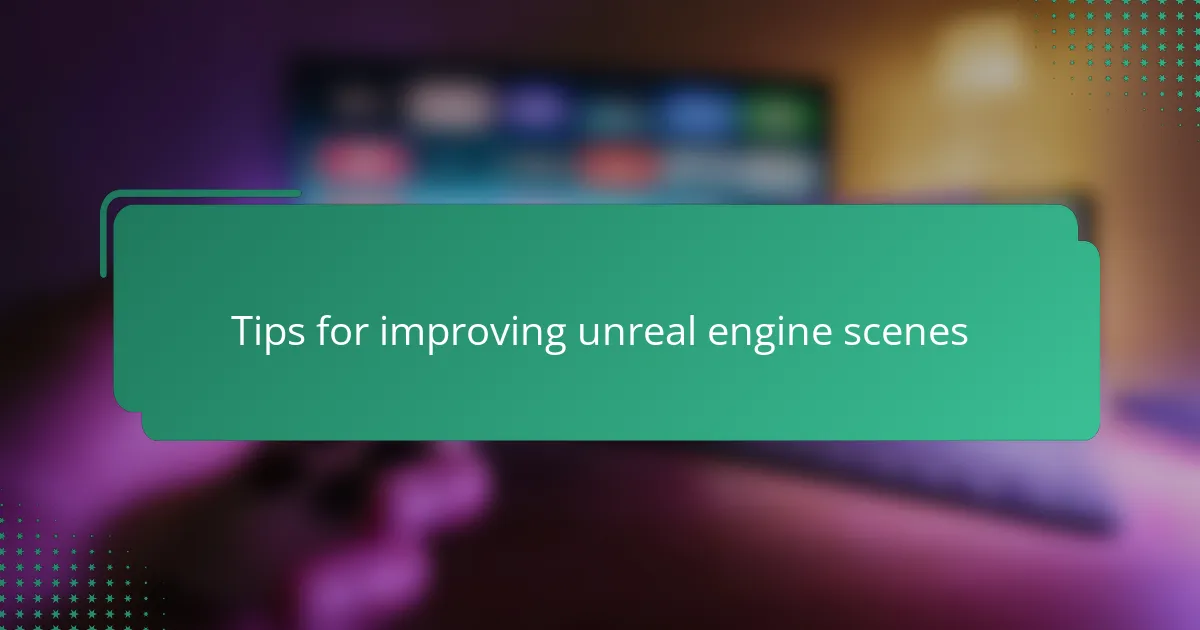
Tips for improving unreal engine scenes
One tip I keep coming back to is optimizing performance without sacrificing visual quality. Unreal Engine offers tools like Level of Detail (LOD) meshes and culling that help maintain smooth frame rates, especially when scenes get complex. Have you ever noticed how a scene can suddenly lag and pull you out of the moment? Balancing detail and efficiency keeps the experience immersive and seamless.
Another approach that has transformed my workflow is leveraging post-processing effects carefully. Effects like bloom, depth of field, and color grading can dramatically enhance the mood, but overdoing them can feel distracting or artificial. I’ve learned through trial and error that subtlety often wins—just enough to complement the scene’s tone without stealing the spotlight. How often do we underestimate the power of a well-tuned visual filter?
Finally, don’t underestimate the value of feedback from others throughout your Unreal project. Sometimes I’m so deep in my own vision that I miss small inconsistencies or usability issues that fresh eyes immediately catch. Sharing your scene with peers or even stepping away for a day or two can reveal insights that improve the final result. Have you experienced that “aha” moment when a simple suggestion turns your scene from good to unforgettable?

